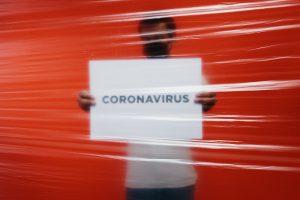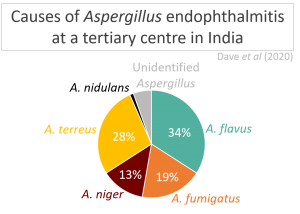Submitted by Aspergillus Administrator on 5 August 2011
The ability of a pathogen to infect one of its hosts involves complex interactions between the two parties. The host organism can bear genetic propensities to be resistant or susceptible to the infection and this can take many different forms, some known and some not. Unfortunately in natural populations each individual differs from other individual – this is the primary mechanism that protects every species from attack by pathogens as if an infection rapidly spreads through a population the chances are that it will not be able to infect every individual – some will be resistant.
Why aren’t all individuals resistant? One reason is that it would be very costly in terms of energy or other resources for any organism to carry all ‘resistance genes’, and of course it is not able to predict which organism will attack & how it will attack so effectively it is unable to know which gene is likely to confer resistance. One illustrative example is the genes that confer resistance to malaria in humans. Recessive genetic differences that make the host resistant to malaria also make the host likley to produce double recessive offspring that have a crippling blood disorder – the positive finely balances the negative.
One model of choice for investigating these genes is the mouse. Over many years laboratory mice have been bred that are very close to being genetically identical. These represent the living ‘blank canvas’ on which to study isolated groups of genes. If all of the genes of the mouse are the same except for a small group it is possible to ignore the unchanging gene effects – this is a way to study the effects of several gene differences at once in the same mouse line. This is thought to be the next step after years of looking at single genes changes in the mouse.
This paper uses this technology to identify genes in the mouse which are important for resistance and susceptibility to aspergillosis. 371 mice from 66 separate lines were tested for resistance to Aspergillus fumigatus using a well established pulmonary infection protocol. Survial times were assessed and found to vary significantly between the lines, indicating that some loci conferred resistance better than others.
The authors were able to further narrow down the indicated loci to suggest several candidate genes conferring resistance to infection. Irf2 (Harada et al. 1989; Masumi et al. 2009) which is involved in host reposnse to infection, Laptm4b (Kawai et al. 2001) which is a transmembrane protein, Hrsb12 (Samuel et al. 1997) which is a heat responsive protein.
This demonstrates the power of this approach and more specifically indicates several novel targets for research into aspergillosis.
News archives
-
Title
Date



